Copywriting is hard even in the best of times, and it’s especially tricky if you’re trying to sell something people take for granted. How do you get consumers excited about a product they never think about?
It’s a challenge many marketers eventually face, but it’s not something that’s widely discussed. So I decided to talk to an industry expert about writing copy for the most undifferentiated product I could think of: toilet paper.

For this exercise, I recruited Thomas Kemeny, an award-winning copywriter and author of the influential book Junior: Writing Your Way Ahead in Advertising.
I showed Kemeny screenshots of websites and social media ads for different direct-to-consumer toilet paper brands (these are all recent startups, so brand loyalty factors in very little). Then I asked him to evaluate each one — not in a mean-spirited way, of course, but in a way that would help make concrete some universal copywriting principles.
Quick disclaimer: Kemeny made it clear that creative decisions are never made in a vacuum, and that it’s difficult to judge someone else’s work without knowing what problems they were hired to solve. So his opinions come with the caveat that they don’t necessarily reflect the talent of the copywriters involved.
With that said, here are the biggest takeaways from our conversation.
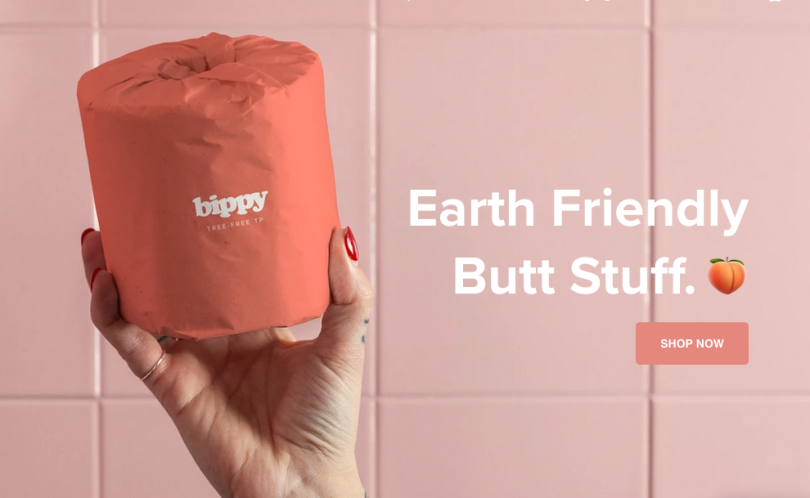
Start With the Truth
After surveying the copy from each DTC toilet paper brand, Kemeny concluded that “none really start from a place of truth.”
What is the truth? For him, it’s the fact that toilet paper isn’t something he ever thinks or talks about. Nobody does — until it runs out.
Maybe that’s the starting point.
“If your brief suddenly changes from, ‘Tell people that it’s eco-friendly...’ to ‘We want to make toilet paper that people are excited to talk about,’ I think that’s already a really interesting brief to start from.”

Have Some Self-Awareness
Kemeny pointed to the copy on No. 2’s homepage, which reads, “This is what a T.P. revolution looks like.”
“People aren’t sitting around waiting for a toilet paper revolution,” Kemeny said. “If you want to talk about a toilet paper revolution, I think at the very least you have to acknowledge that’s a strange thing to be saying.”
Or, he said, fully commit to the revolution bit. Play it up and go all out — if that’s the tone your brand is going for.
Either way, brands need to think through what they’re saying, and why people are on their websites in the first place.
Brag Without Lying or Exaggerating
Speaking more generally, Kemeny suggested that brands look for ways to play up their strengths without saying they’re the best, or the first, or are changing the way the world thinks about X. Consumers can smell that exaggeration from a mile away. It’s not only disingenuous, it’s boring.
“If I say this toilet paper will change your life,” the customer will ultimately be disappointed, Kemeny said. So don’t say it.
Instead, reframe until you win.
“You don’t have to say you’re the greatest in the world,” Kemeny added. “You just have to find the instance [in which you’re the greatest] and emphasize that.”
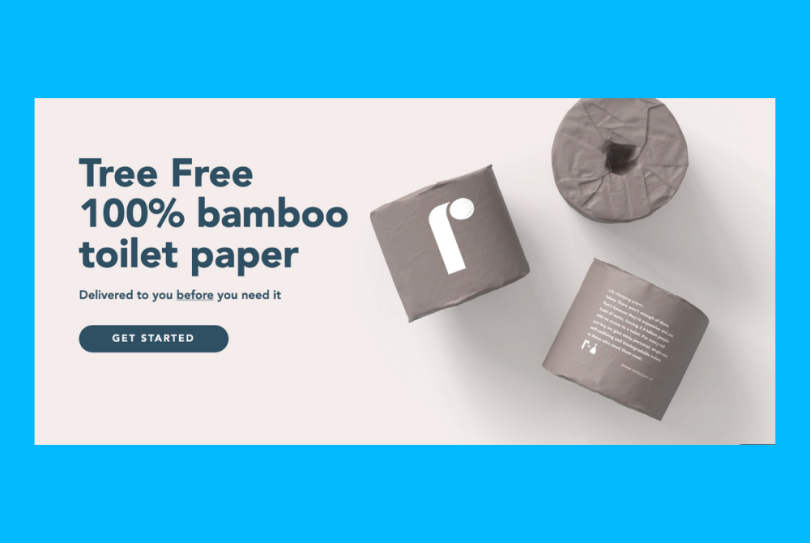
Keep Writing Until Something Interesting Appears
A lot of DTC brands sound the same, Kemeny said. And these toilet paper companies are no exception.
“There’s an assumption of what a brand is supposed to sound like, and they want to sound like that [instead of] carving out their own tone, their own world.”
To come up with unique copy, just start writing. Let the bad stuff and the cliches pour out of you until there’s nothing left.
“The first few ideas you have will generally be the same ideas everyone else will have,” Kemeny said. “Just get through that. Get them out of the way.”
Eventually, he said, your brain will run out of obvious ideas and start mining your subconscious for material. That’s where it finds ideas “from a deeper spot that feels more true.”
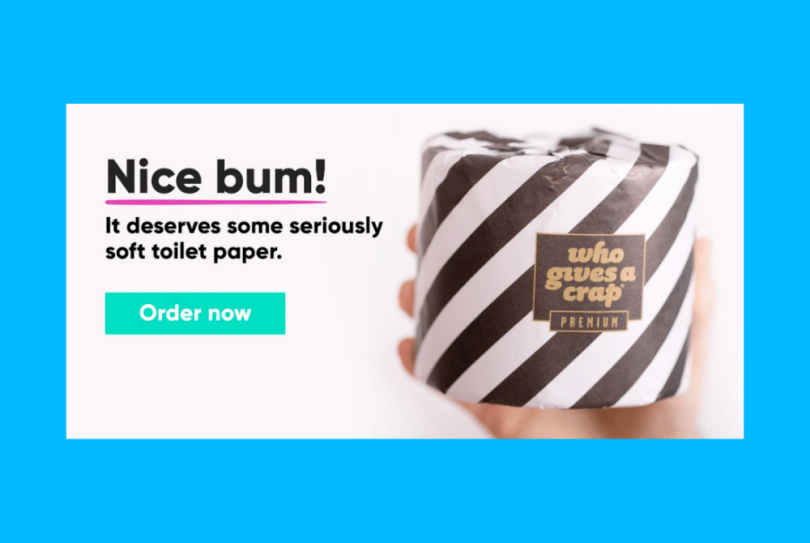
Give Your Words a Perspective
Kemeny observed that all of the DTC toilet paper brands make some attempt to be clever — whether it’s the name of the brand or a sassy line — but none of them fully embrace that edgy voice.
Who Gives a Crap, for example, has a “naughtiness” to its name, which it should lean into, Kemeny said. He suggested that a brand with that name commit to a bad boy, rebellious vibe, with edgy copy that makes a villain out of Big Toilet Paper.
In his book, Kemeny wrote, “Everyone talks about knowing your target, but you also want to know your voice as the author. Otherwise your ads start sounding like they’re coming from the Great Ad-Voice in the Sky down to the anonymous masses.”
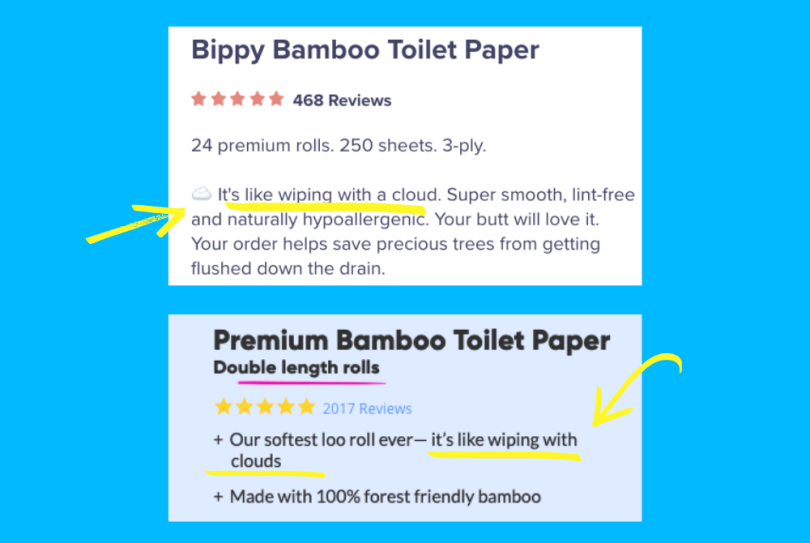
Use Metaphors, Not Similes
“Similes are metaphors for people who don’t know how to write metaphors,” Kemeny said.
“If that line just said, ‘Wipe with our clouds,’ that’s already — it’s not a great line — but it’s already slightly more interesting. It’s like, what do they mean by that? I’m suddenly intrigued.”
Writers should look for ways to avoid using “like” or “as” in their copy. They’ll be happier with the result.
For example, instead of saying “X is like Y,” begin by assuming that X is Y, and write from there. The line may read smarter that way.

Give Every Word a Reason to Exist
Saying something like “That’s right” is a failed attempt to make something sound conversational by adding unnecessary words, Kemeny said.
He also warns against the use of phrases like “That’s why,” “Not to mention,” “No matter,” “No wonder” and “You heard it here” when writing advertising copy. To him, they’re often just pointless filler.
“I’m not saying everything has to be short, or [can’t have] ornamental words around it,” Kemeny added. “There needs to be a reason for those words.”
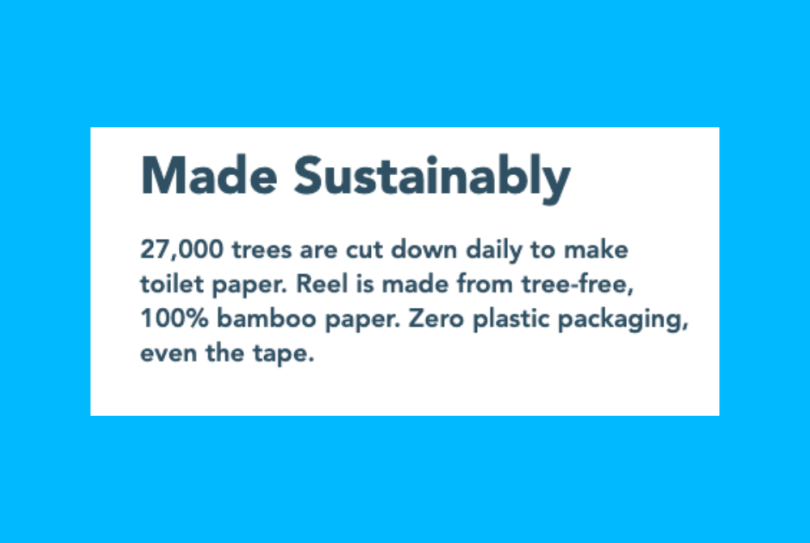
Make the Solution More Interesting Than the Problem
Early in his career, Kemeny learned that it’s really easy to talk about the problem that a product solves. Much more difficult, though, is finding a unique or intriguing way to talk about the things that using the product will allow the customer to do.
It’s the copywriter’s job to make the solution sound interesting. That’s “what will make an ad effective,” he said.
Instead of discussing the negative environmental impact of traditional toilet paper, for example, these brands could focus on the solution.
That could be written as, “No guilt, no matter how much you use,” Kemeny suggested. “You shift the product fact into the consumer benefit, and then people care about it when they read it.”
* * *
I concluded our conversation by showing Kemeny a tagline generated from artificial intelligence, after I fed a boilerplate toilet paper brand description to copy.ai, and pulled out the most bizarre suggestion: “The future is clean, and it’s inside your butt.”
Kemeny liked it.
“It’s absolutely brilliant and should definitely appear somewhere,” he said. “There’s a whole world to play in in that thought.”




